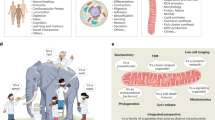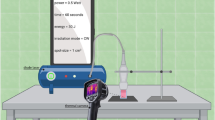Abstract
IT appears from several published works during recent years that a large number of enzymes have been located in the mitochondria fractions by means of differential centrifugation of tissue homogenates, especially of animal cells. Duve and Berthet1 have tried to standardize the conditions of centrifugation in different types of instruments so that the results may be reproduced, and they urge that some attention should be paid to such factors as diffusion- and convection-currents and also to the manner of decantation. Some errors are, however, possible with this type of work, as have been pointed out by Brachet2 while discussing the nuclear control of enzymic activities; during homogenization and differential centrifugation soluble enzymes can no doubt be adsorbed on particles; but the microsomes (submicroscopic cytoplasmic granules) may release enzymes which are normally bound to them just as in the case of crushing the cell constituents in different media. By this method it is scarcely possible to get information on the interactions occurring between the different fractions in a normal living cell and to be sure that the various particles obtained by differential centrifugation are really the ones which pre-existed in the intact cell. In this connexion, Holter3 has also discussed the profound changes that the process of homogenization involves; he points out that the hyaline ground plasm of most cells is not miscible with water and that a certain degree of autolysis is indispensable in order to set the cytoplasmic particles free and that this autolysis must have far-reaching consequences with regard to enzyme yield and enzyme distribution.
This is a preview of subscription content, access via your institution
Access options
Subscribe to this journal
Receive 51 print issues and online access
$199.00 per year
only $3.90 per issue
Buy this article
- Purchase on Springer Link
- Instant access to full article PDF
Prices may be subject to local taxes which are calculated during checkout
Similar content being viewed by others
References
Duve, C. de, and Berthet, J., Nature, 172, 1142 (1953).
Brachet, J., Colston Papers (Proc. Seventh Symposium, Colston Res. Soc.), 7, 91 (1954).
Holter, H., Proc. Roy. Soc., B (Discussion Meeting), 142, 141 (1954).
Bose, S. R., La Cellule, 53, 153 (1950).
Bose, S. R., Bot. Gaz., 104, 633 (1943).
Guillermond, A., “Cytoplasm of the Plant Cell” (Chronica Botanica Co., Waltham, Mass., U.S.A., 1941).
Davies, D. D., Proc. Roy. Soc., B (Discussion Meeting), 142, 159 (1954).
Sorokin, H., Amer. J. Bot., 28, 476 (1941).
Cowdry, E. V., “General Cytology” (Univ. Press, Chicago, 1925).
Duve, C. de, et al. Nature, 172, 1143 (1953).
Author information
Authors and Affiliations
Rights and permissions
About this article
Cite this article
BOSE, S. Location of Enzymes in Mitochondria Fractions. Nature 176, 122–123 (1955). https://doi.org/10.1038/176122a0
Issue Date:
DOI: https://doi.org/10.1038/176122a0
Comments
By submitting a comment you agree to abide by our Terms and Community Guidelines. If you find something abusive or that does not comply with our terms or guidelines please flag it as inappropriate.



